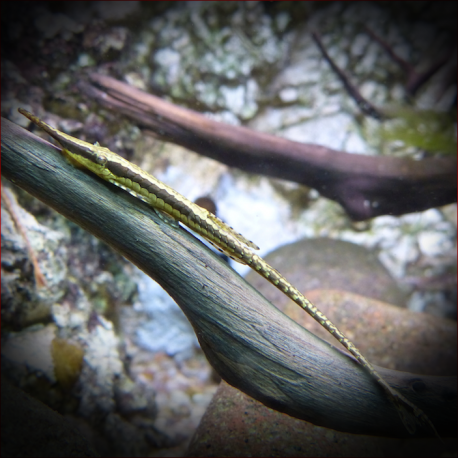More info
Datasheet
| Minimum Tank Size | 200 litres / 52.83 US gallons |
| Maximum Size | 15.2cm / 5.98inches |
| Temperament | Peaceful |
| Care Description | Moderate |
| Temperature | 22.8°C / 73.04°F - 26.1°C / 78.98°F |
| Carbonate Hardness | 4-8 |
| pH | 6.5-7.0 |
General Description
The Farlowella Catfish, scientifically known as Farlowella acus, is a peaceful species belonging to the Loricariidae family. It boasts a long and slender body, armored with a tan and black coloration. A defining feature is its elongated nose, typical of suckermouth catfish. This species is an omnivore with a maximum size of 15.2cm, making it a moderate-sized addition to freshwater aquariums.
Aquarium Setup
For a healthy environment, a recommended tank size of 200 litres or larger is advisable for the Farlowella Catfish. Creating a natural habitat with rocks, driftwood, and plants is beneficial. Planted aquariums with high aeration and water movement are preferred, providing ample hiding spaces to reduce stress. Refer to specific water conditions such as a pH level of 6.5-7.0, a temperature range of 22.8-26.1°C, and a carbonate hardness range of 4-8.
Behaviour
This species exhibits peaceful behavior, making it an ideal addition to a community tank. Farlowella Catfish tend to be calm and non-aggressive towards tankmates. They are predominantly bottom-dwellers and often scrape algae from various surfaces within the aquarium.
Feeding and Diet
Feeding the Farlowella Catfish is relatively simple as they are not picky eaters. Their diet primarily consists of algae and leftover food in the tank. In the absence of these, consider supplementing their diet with high-quality flake food, sinking herbivore pellets, or freeze-dried bloodworms to ensure adequate nutrition.
Reproduction & Dimorphism
Information on the reproduction and dimorphism of Farlowella Catfish is not provided.
Habitat and Distribution
Originating from the lakes and rivers of South America, the Farlowella Catfish thrives in freshwater habitats with a moderate to slow water flow. Their natural habitats likely include areas with vegetation, rocks, and driftwood where they can camouflage and find food sources.

